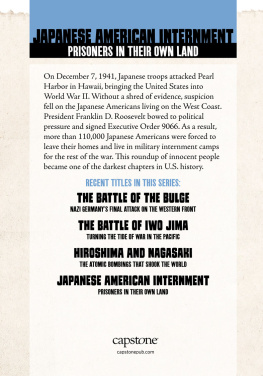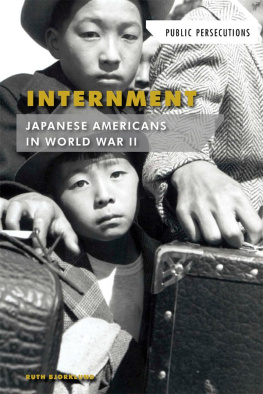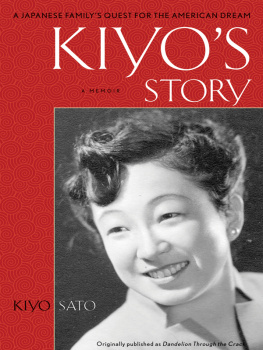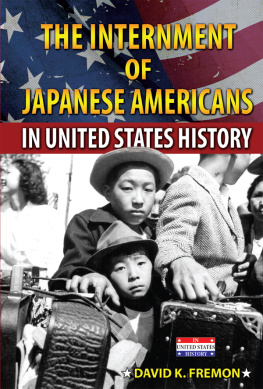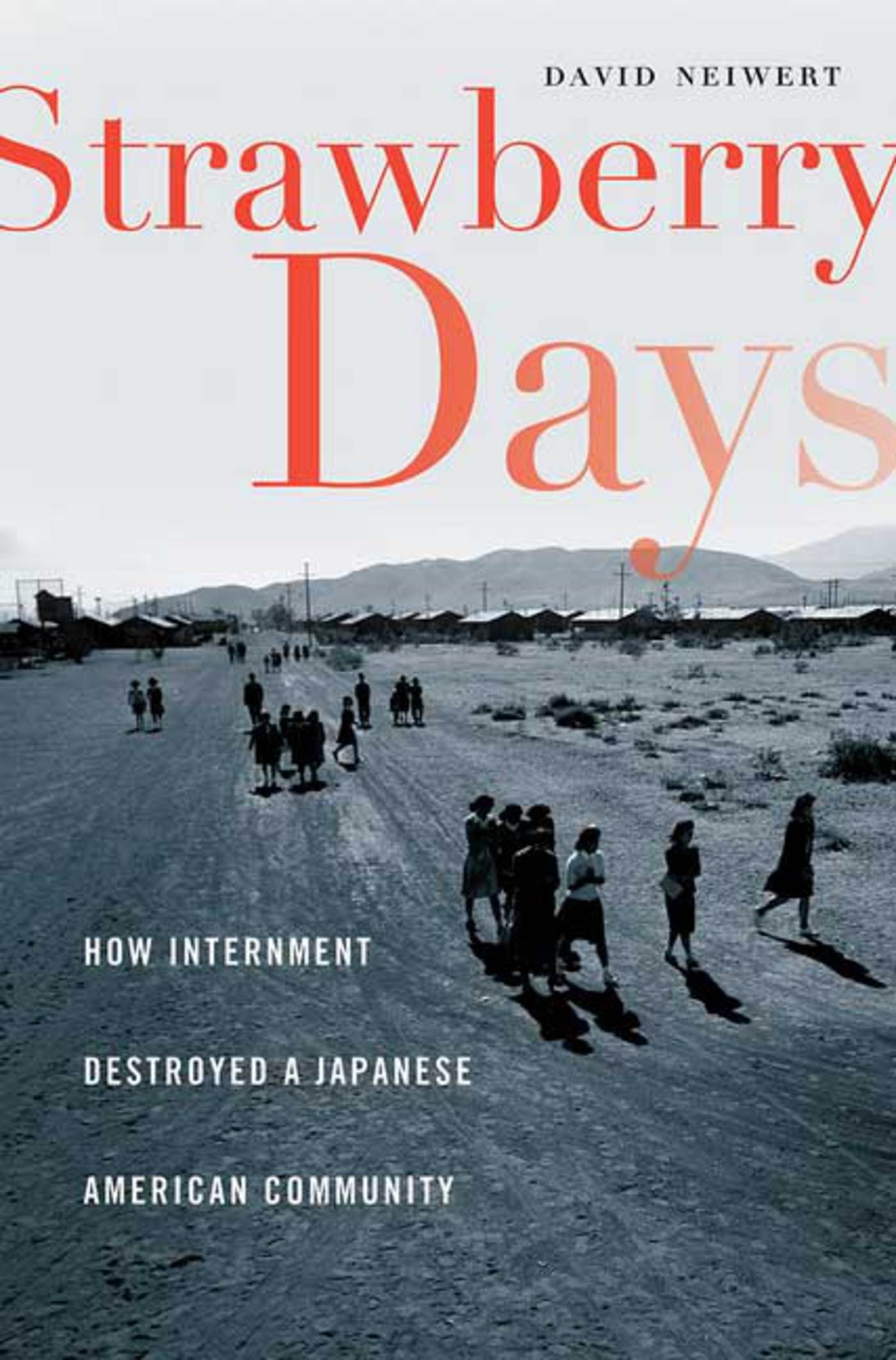Contents
Guide

The author and publisher have provided this e-book to you for your personal use only. You may not make this e-book publicly available in any way. Copyright infringement is against the law. If you believe the copy of this e-book you are reading infringes on the authors copyright, please notify the publisher at: us.macmillanusa.com/piracy.
Contents
Because this text was written over many years, beginning with its origins as a month-long series in the Bellevue Journal American and continuing with its long project life as a book in progress, there have been many people who have contributed to its development at its many various stages. It will be impossible to remember them all, and all I can do is beg forgiveness from the many helping hands that may have been overlooked.
I owe a deep debt of gratitude to Ron Chew and the staff of the Wing Luke Asian Museum (notably Beth Takekawa) who played a significant role in connecting me with many of the original interviewees from 1992, as well as a good deal of research material made available through their exhibit that year commemorating Executive Order 9066.
Similar thanks are also due to the many interviewees, all of whom are listed in A Note on Sources. But very special thanks must be paid to Ed Suguro, who connected me with a number of former Bellevue Nisei; Rae Takekawa, who sat in and helped facilitate many of the interviews with her father; and Al Yabuki, who spent many hours driving about Bellevue with me and showing me where old farms and buildings had once been. The deepest debt, perhaps, is owed to Tom Matsuoka, who had endless patience for my many questions, and who made the story a book worth writing.
Along the way, I also owe thanks to my erstwhile colleagues at the Journal American, especially former city editor Mary Rothschild and former editor Jack Mayne, who helped make the original project happen. Subsequently, Id like to thank Michael Duckworth, the acquisitions editor at University of Washington Press, who shepherded the manuscript through several different peer reviews; and the several anonymous peers who read this text in its many earlier versions.
I owe many thanks to the respective staffs at the University of Washington Special Collections, the UW Microform and Newspaper Collections, the UW Government Publications Library, and the Museum of History and Industry (especially Dr. Lorraine McConaghy) in Seattle; and at the Washington State Archives in Olympia.
Thanks is also due to the many people who helped finish the text, especially my editors at Palgrave, Brendan OMalley and Airi Stuart, and their assistant, Melissa Nosal; Palgrave history editor Alessandra Bastagli; copyeditor Rick Delaney; indexer Rebecca Francescatti; and production chief Donna Cherry. Thanks also to my proofreaders, Evie Kara and Carrie Monaghan, and especially Lisa Dowling, my wife and constant reader throughout its many versions.
Finally, but perhaps most significantly, I owe an eternal debt of thanks to the Densho Project and its staff, particularly executive director Tom Ikeda; interview programs manager Alice Ito; and staffers Dana Hoshide, Leslie Arai, and Geoff Froh. Their work was indispensable in helping give this text its final shape.
Dedicated to my daughter, Fiona, in hopes that her generation does not forget.
The soil on John Matsuokas little farm in Bellevue, Washington, was black and rich with loam, and he liked to show it to you, cupping it in his hand and letting it trickle like coal dust through his fingers. This used to be a lake bottom and then a wetland, and the result was this dark, fertile earth.
Its wonderful soil, Matsuoka said. And you should see what it produces.
When I visited his farm in the summer of 2000, he set about showing me. Hed wade into a furrow and begin pulling up potato plants, whacking off the green leafy tops and collecting the remaining tubers in a box. Going from furrow to furrow, he gathered all kinds: brown Russets, Yukon golds, reds, even some strange-looking purple potatoes.
He dug up some with bite marks in them. This was his latest farm problem: Rats, he said. And the worst part is, they just take one bite out of the potatoes and then go on to the next one. They ruin more that way. He considered setting out some traps, but he wouldnt even consider poison: I wont use anything that might get into the food.
Having filled the box with about a sacks worth of potatoes, he set it aside and headed over to the rows of corn growing in the adjoining plot. Again, he had about three different varieties, only evident by the differing heights of the stalk rows. All of the stalks towered above Matsuoka, who was never a big guy to begin with, and at age 85 had probably lost a few inches over the years.
He could recall a time when he tried his hand at a different kind of agriculture, working the sugar beet farms of southern Idaho during World War II, as a way of getting out of the nearby internment camps where he and thousands of other Japanese Americans were exiled. Unlike the 5- or 15-acre tracts hed worked all his life, suddenly he was in the middle of monstrous 500-acre farms.
They were big, he said. And then, it was heavyyou know, like loading the hay onwell shucks, youre shoving up fifty and sixty pounds up higher and higher, you know. Then, there was a Caucasian guy on the other sideIm on this side and hes on that side. Pretty soon the pile of hay on the wagon was getting pretty up there. And then he comes around and says, How in the hell are you getting that hay up there?
He knows Im not as strong as he is. And I says, Oh, I stick the fork in that pile and then I put the butt on the ground, right next to my foot. Get it straightened up, and then I shoot it right straight up and on there. Oh! Of course, hes strong enough to get, just fork it and heave-ho, you know, but he knows darn well I cant do it.
Matsuoka laughed at the memory.
He reached up, rustled through the stalks, and carefully selected and cut off four ears, then sauntered back to where he left the box and tossed them in. Here, he said, handing me the box. Take that home and have it with your dinner. Generosity is his second nature.
Tucked away on a bench of land above Lake Sammamish, Matsuokas was a tiny farm by any measure, totaling only about four acres. But he got everything out of it he could. In addition to the potatoes and corn, he also grew lettuce, cabbage, and cucumbers. They were not big crops, but they were of extraordinarily high quality. He sold to the local, somewhat upscale QFC supermarket chain: They take everything I grow.
He dug around in the lettuce, took out a knife, and lopped off the upper half of a leafy head, exposing the core. He pointed to a brown spot in the middle of it, a product, he said, of a hot spell that hit around the Fourth of July. He had to be more selective that year about which heads he took to market, but hed learned how to detect the tainted lettuce. He only wanted to sell his best. It kept his customers happy.
Thats how it always was for Matsuoka: not just surviving, but thriving by being a better farmer than the next guy, by growing better food on less land. Thats how it always was for Japanese American farmers generally.
Matsuoka had another farming job during the war that got him out of the internment campsthis time in rural Michigan. He and his wife transferred out of Minidoka, the big camp in southern Idaho, when an old friend in Ann Arbor hooked them up with a Michigan farmer who needed help on his spreadthe farmer mainly ran a chicken and egg business, and needed someone to run the produce side of things. Matsuoka agreed to come out and run the farm on a shared-profit basis.


